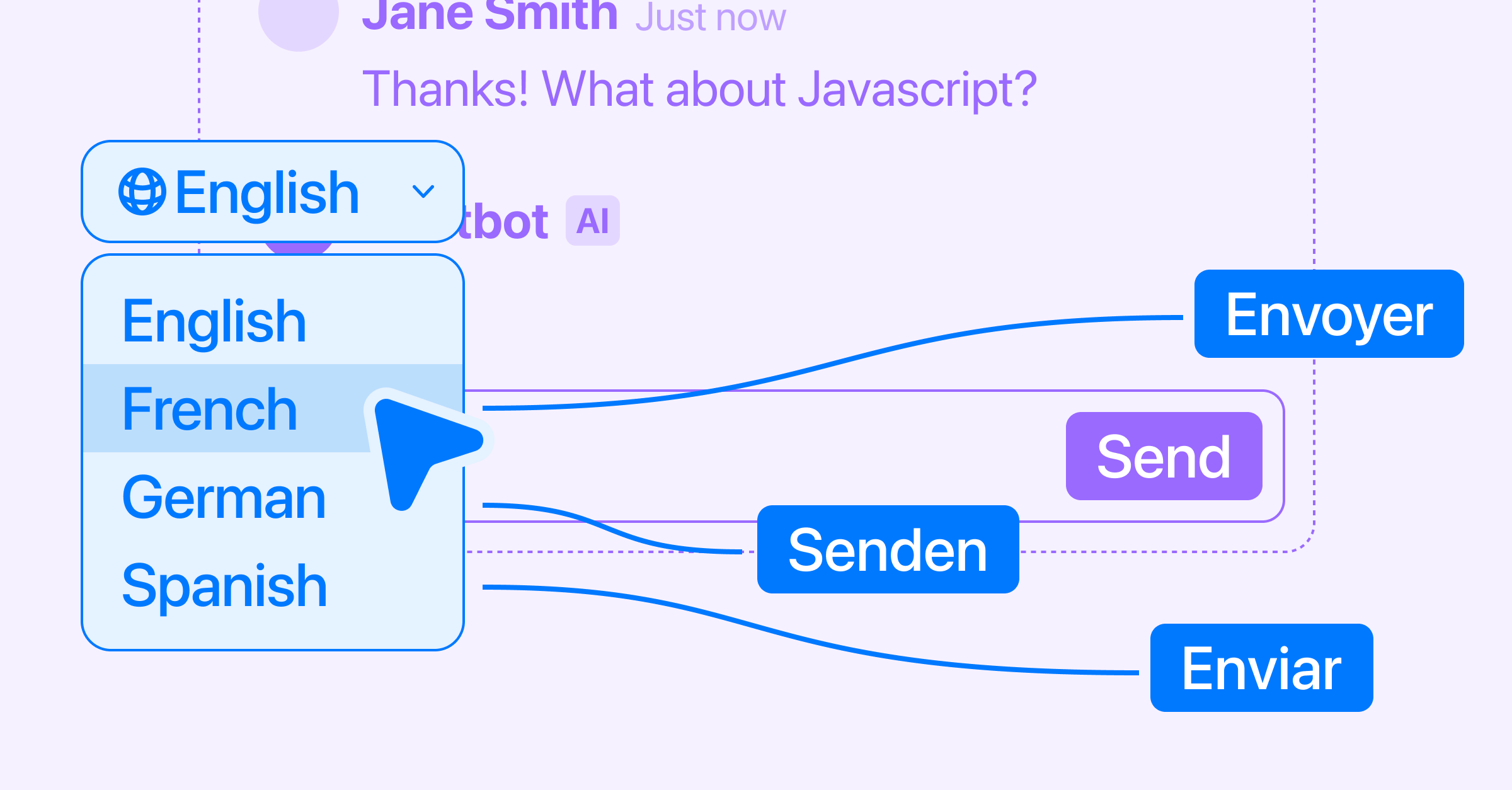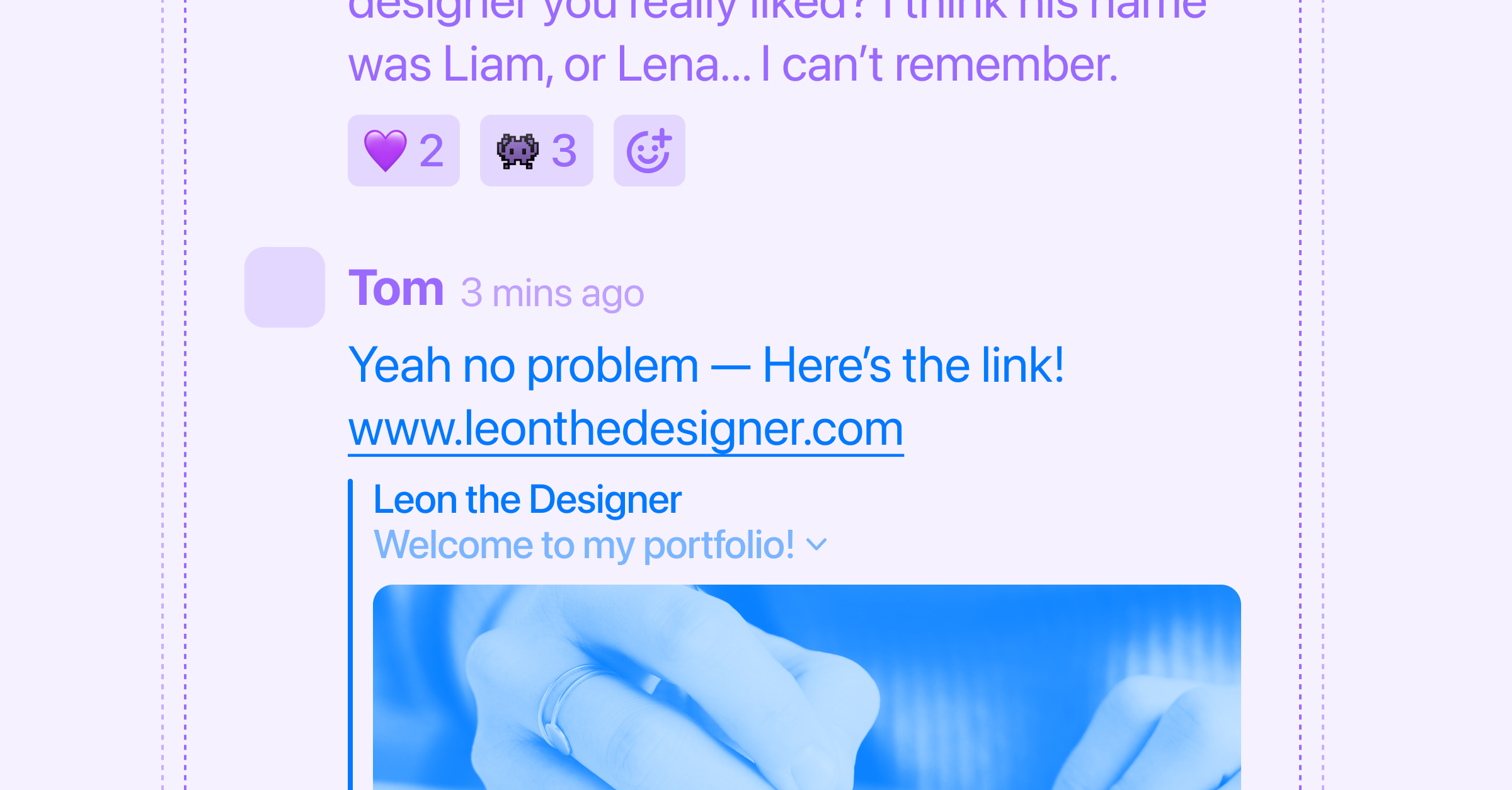It's the last update of the year, and what a year it's been! Just a year ago we launched the first few UI components, and now Cord powers conversations in thousands of companies, in use cases ranging from video editing to AI-powered crop monitoring, financial planning to NFT minting and many more. Just this month we've shipped features improving user experience of Cord comments, the developer experience, and continued to increase customization, performance and reliability. Read on to see what you can bring to your product:
🇧🇷 Cord in any language 🇻🇦
Our new translations feature lets you change the text in the SDK, either to provide your own names to things (Maybe "What's happening?" is a better fit for your product as a placeholder than "Reply..."), or to translate the product into other languages, based on the user's locale.

We wanted to make it really easy to make small tweaks to the default English text, so if you just want to change one or two pieces of text, you don’t need to do a lot of work. At the same time, we mapped everywhere text appears across Cord's components so you can translate the entire interface to any language.
🔗 Link Previews in messages
When writing a message, if it contains a link, we now generate a preview and attach it to the message. These are the link previews you know and love from WhatsApp, Twitter, Slack or any modern communication tool, really — but now they're in your app!

The preview is based on the page's Open Graph <meta> tags, and is added as an attachment object to the Cord message, so you can interact with it through the REST APIs or the Javascript SDK (you can even disable link previews altogether).
Oh, and something we learned in the process of building this is that, in some circles, this feature is known as "link unfurling". So now you have a use for the word 'unfurling' that doesn't involve going on sea adventures!
Demo apps with open source code

Our demo apps have been significantly upgraded, with a ton of polishes, an integrated GPT-4 bot and other bells and whistles. Even better - the entire source code is up on Github, so these apps can serve as a reference implementation if you're inspired by a particular experience. Here's what you can lift off of the demos:
- A Document editor use case where users can highlight text to comment on it, a-la Google Docs or Notion. This interaction is also useful for code editors like Monaco.
- A Dashboard commenting use case, where comments refer to a specific data point in a graph, or a cell in a spreadsheet.
- Video comments are great because when you click they fast-forward the video to the right spot, include the timestamp and appear on the video or audio 'seek bar'. It's also a good example for annotations on images.
- The Canvas app is meant to look suspiciously like Figma - and this interaction works for any pan-able, zoom-able surface like digital whiteboards, design apps or architecture or mapping applications. Comments "stick" to the shapes they're placed on, so they can move together, or you can drag the pin to move the comment by itself.
See messages across any group you're a part of
You can now create experiences where users can see messages from all of their privacy groups*, rather than one group at a time. So you can easily create experiences like having two threads - one that's private and one that's public, on the same page. There's a bunch of cases where this can be useful. For instance, products that enable agencies to speak to multiple clients (who can't see each other's messages, but where the agency employees can see all of them). Another example is for client support, where you want to have a "sidebar", internal discussion next to the main communication that clients see. Or in "supervisor" use cases where managers can hold private conversations next to conversations with their reports.
The key change that enables this is setting the group at the component level, rather than just at the global CordProvider's init. There's more info here on how to set the privacy group for a component.
* For developers who've been with us for a while, 'groups' used to be called 'organizations'.
Create Markdown-formatted messages from the comfort of your terminal
Tapping into Cord's APIs from your terminal window with the Cord command-line interface (CLI) has been one of the most popular developer quality-of-life improvements we've shipped in the last couple of months — and it keeps getting better! We've added support for formatting messages you send from the CLI with Markdown so it's that much **easier** to get messages to appear _just right_.

Stay in touch
That’s it for this month! If you’re an existing customer and have questions for us, please get in touch or ask the Cord bot, and be sure to keep up to date with our changelog.
And if you’re new here, you can check out Cord and see if collaboration is right for your product, build with the SDK (for free!) or book a demo. And if you want to keep up with Cord and our ever-evolving product, follow us on Twitter and LinkedIn.
